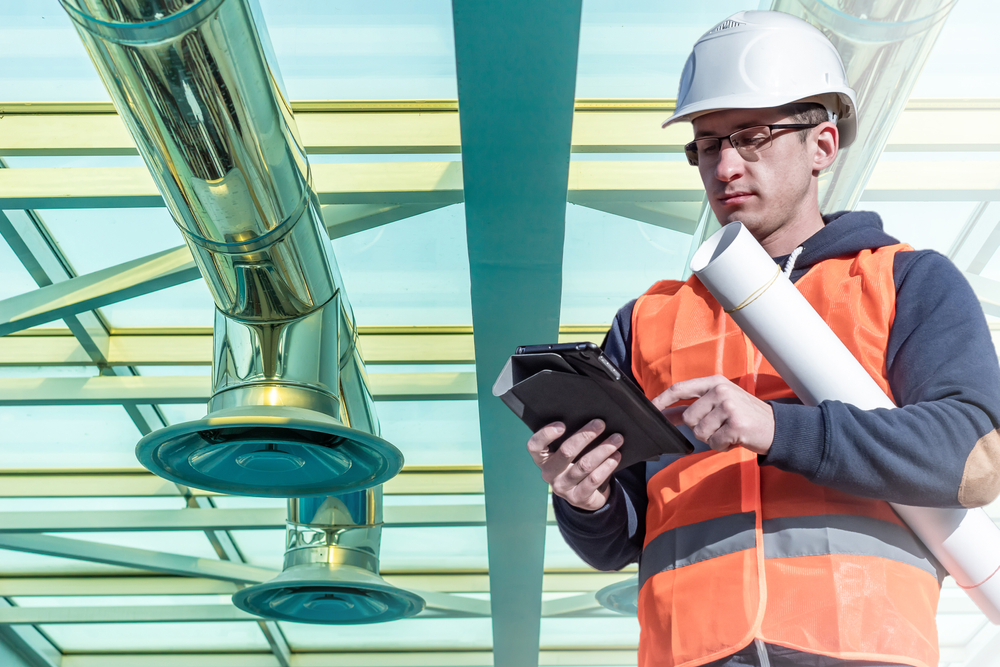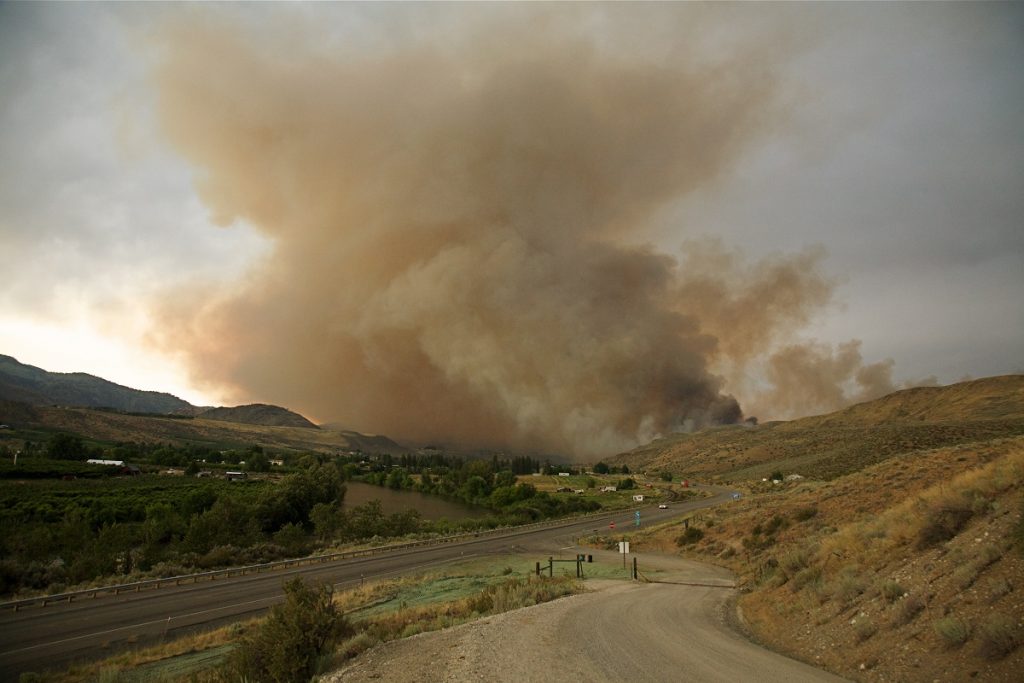Are you prepared to fully reopen your facilities during an ongoing, if waning, pandemic and the threat of wildfires this summer?
States and localities are rolling back pandemic precautions as coronavirus disease 2019 (COVID-19) vaccinations roll out across the United States–President Biden pledged May 4 that 70 percent of American adults would receive at least one vaccine dose by July 4th and 160 million Americans would be fully vaccinated. Closure orders and occupancy limits already have been or are about to be lifted.
Building ventilation can offer protection from two of the most pressing hazards in Summer 2021: COVID-19 transmission among the public and a workforce with mixed vaccination status and the respiratory hazard posed by wildfire smoke. About 50% of the country continues to experience drought conditions, according to the National Oceanic and Atmospheric Administration’s (NOAA) Climate Prediction Center (CPC).
However, ventilation should be just one tool in your toolbox for handling COVID-19 and wildfire smoke hazards. The Occupational Safety and Health Administration (OSHA) still recommends face coverings and physical distancing for a workforce with mixed vaccination status. Administrative controls like alternative work sites and allowing telecommuting may be better options for wildfire smoke hazards.
Post-Pandemic Reopening
OSHA’s recently refocused its COVID-19 guidelines on protecting unvaccinated workers and those otherwise at risk for illness, recommending that employers improve ventilation to reduce the concentration of infectious particles in indoor air. The agency pointed employers to advice from the Centers for Disease Control and Prevention (CDC) and the American Society of Heating, Refrigerating and Air Conditioning Engineers (ASHRAE).
If your facility has had no or few occupants during the pandemic, then heating, ventilation and air conditioning (HVAC) systems may need inspection and maintenance before resuming full occupancy. ASHRAE recommends treating the first day back like your HVAC system’s very first. Mold spores or legionella bacteria may pose a likelier health threat than SAR-CoV-2, the virus that causes COVID-19. While viruses, including SAR-CoV-2, need a living host to replicate and proliferate, bacteria and mold are living organisms capable of self-replication on environmental surfaces, including those inside HVAC systems.
Exposure to Legionella bacteria in potential infectious droplets that are respirable in size, is possible where cooling towers, humidification systems, or other HVAC equipment is tied into water systems that have not been appropriately treated.
Stagnant water in closed buildings is susceptible to the growth of microorganisms like Legionella. While many facilities and offices reopened during the course of the pandemic, some have remained unoccupied for the 15 months since the pandemic was declared in March 2020.
The Legionella bacteria is the cause of Legionnaire’s Disease, a bacterial pneumonia. Building owners employers need to be aware of water contamination hazards and need to take special maintenance steps to reopen buildings that have stood empty or nearly empty due to stay-at-home orders, local or state occupancy limits, or a temporary, corporate shift to telecommuting.
While Legionella can cause Legionnaires’ disease, a serious and potentially fatal lung infection, infection also may lead to Pontiac fever, a less serious infection with milder symptoms similar to seasonal flu. OSHA has no specific standard for either form of Legionellosis, but it can cite employers under the General Duty Clause of the Occupational Safety and Health Act if workers are sickened by Legionella exposure on the job.
Before fully reopening your facilities, you may need your building engineer or facilities management staff to implement steps in ASHRAE’s guidelines, ANSI/ASHRAE Standard 188-2018, Legionellosis: Risk Management for Building Water Systems.
The CDC also recommends checking a building’s mechanical and life safety systems to ensure if it’s ready for occupancy, before resuming normal business operations.
The centers recommend checking for hazards associated with prolonged facility shutdowns such as mold growth and rodents or other pests, as well as issues with stagnant water systems, and taking appropriate remedial actions.
Ongoing COVID-19 Risks
Unless all your employees are fully vaccinated, some are still at risk of COVID-19 infection from customers, guests, and other workers. Regardless of whether SAR-CoV-2 is “aerosolized” or “airborne,” ventilation and filtration can help reduce the volume of infectious particles in an indoor space.
The CDC recommends increasing circulation of outdoor air as much as possible by opening windows and doors, if possible, and using fans. However, you shouldn’t open windows and doors if doing so poses a health or safety or health risk for occupants, such as breathing outdoor environmental contaminants like carbon monoxide, molds, or pollens.
The CDC also suggests consulting an HVAC professional about taking steps to improve ventilation in your facility, such as:
- Increasing the percentage of outdoor air potentially as high as 100%, for example, by using economizer modes of HVAC systems; however, you must weigh air quality issues (like wildfire smoke or other particulate matter) along with conditions like temperature and humidity;
- Increasing total airflow supply to occupied spaces as well as disabling demand-control ventilation (DCV) controls that reduce air supply based on temperature or occupancy;
- Increasing air filtration to as high as possible without significantly diminishing designed airflow–some systems cannot generate the airflow necessary to use high efficiency particulate air (HEPA) filters–and inspecting filter housing and racks to check for appropriate filter fit as well as minimizing filter bypass; and
- Considering running HVAC systems at maximum outside airflow for 2 hours before and after normal operating hours.
You also need to ensure that exhaust fans in restroom facilities are functional and operating at full capacity when the building is occupied and may want to consider utilizing ultraviolet germicidal irradiation (UVGI), which uses ultraviolet radiation to kill bacterial, fungal, and viral organisms.
The California Department of Public Health (CDPH) issued interim guidelines for ventilation, filtration, and air quality in indoor environments on February 26. CDPH stressed that “effective ventilation is one of the most important ways to control small aerosol transmission” and suggested taking steps like employing natural ventilation or improving mechanical ventilation and considering the use of portable air cleaners (PACs). These industrial air cleaners with HEPA filtration may be well-suited for larger rooms and indoor areas, according to CDPH.
PACs may even be effective during wildfires in reducing the concentration of both smoke and coronavirus particles in spaces not equipped with HVAC systems. However, to filter wildfire smoke and coronavirus-sized particles, the PAC should have a
Clean Air Delivery Rate (CADR) capable of handling tobacco smoke (0.9-1.0 μm).
The Industrial Ventilation Committee of the American Conference of Governmental Industrial Hygienists (ACGIH) last year published a white paper on ventilation measures in industrial facilities for controlling SARS-CoV-2 exposures. The committee examined the potential for both ventilation and filtration to control exposures to infectious particles.
Like ASHRAE’s recommendations for office settings, the ACGIH committee’s recommendations for industrial facilities include increasing the supply of outside air and upgrading to the highest efficiency filters that existing systems can accommodate. The committee also suggested continuously operating local exhaust ventilation systems and restroom exhaust fans.
However, ventilation measures are not a substitute for administrative controls like face coverings and social distancing among a workforce of mixed vaccination status.
Wildfire Smoke
The National Interagency Fire Center (NIFC), the federal government’s support center for wildland firefighting, currently predicts above normal fire potential for the Southwestern United States; Great Basin, Northern Rockies, and Rocky Mountain Regions; Central Oregon into southeast Washington; and the Cascades, Coast Ranges, and Sierra of California.
Wildfire smoke presents a significant health hazard for exposed workers, even when they are not working near a wildfire, including in indoor spaces. Wildfire smoke is composed of harmful chemicals and tiny particles–particulate matter measuring 2.5 microns or less in diameter (PM2.5)–suspended in the air. Health hazards of PM2.5 include bronchitis, heart failure, reduced lung function, and worsening of asthma.
Your best option for protecting employees from wildfires and wildfire smoke may be evacuation. OSHA recommends employers have an evacuation plan in place before a wildfire occurs. An evacuation plan needs to include a list of conditions that would activate the evacuation plan–severe weather events like floods, hurricanes, and tornadoes also might trigger an evacuation. Your evacuation plan also needs to include a list of emergency functions and who will perform them; specific procedures, exits, and evacuation routes, along with procedures for accounting for personnel, customers, and visitors; the chain of command during an evacuation; and any equipment needed.
Functioning and properly maintained HVAC systems can reduce your employees’ exposure to wildfire smoke. Proper maintenance includes ensuring that system filters are not damaged, dirty, dislodged, or leaking around the edges.
You may want to consider installation of the highest efficiency filters that do not exceed the static pressure limits of your HVAC system, adhering to the specifications set by the equipment manufacturer or system designer. Some systems may not have the capacity of HEPA filter use. Cal/OSHA suggests considering the use of stand-alone HEPA air cleaners inside of buildings. The California Air Resources Board maintains a list of certified air cleaners.
Besides assessing, maintaining, and potentially modifying your HVAC system to reduce workers’ wildfire smoke exposure, you can take administrative steps to protect workers like alternative work assignments, relocation, and telecommuting. Respirators can protect workers from particulate matter; however, disposable dust masks like N95s do not protect against gases or vapors.
Respirators may even pose their own risks for those who have not been medically evaluated for respirator use, especially those with heart or respiratory conditions. Also, employees who voluntarily use respirators may not be fully protected if they are not trained in performing a user seal check.
You may be faced with an overlap of wildfire season and the ongoing spread of COVID-19, including viral variants. Despite the wide availability vaccination, the COVID-19 pandemic has not ended. The CDC and state public health departments continue to report infections, severe illness, hospitalizations, and deaths. Mixed vaccination status among workers remains a fact of life.
The CDC’s advice last year on COVID-19 and wildfire smoke may be useful again this summer. The CDC cautions that cloth face coverings used to slow the spread of COVID-19 offer little protection from the harmful constituents of wildfire smoke. N95 respirators may afford some protection from wildfire smoke particulate matter and supply chain issues may have eased even if demand remains high.
However, if you provide your employees with respirators such as N95s, OSHA regulations require compliance with respiratory protection program requirements, including medical evaluation, fit testing, training, and recordkeeping.
Establishing a compliant respiratory protection program may be just as onerous as developing and implementing an evacuation plan.



